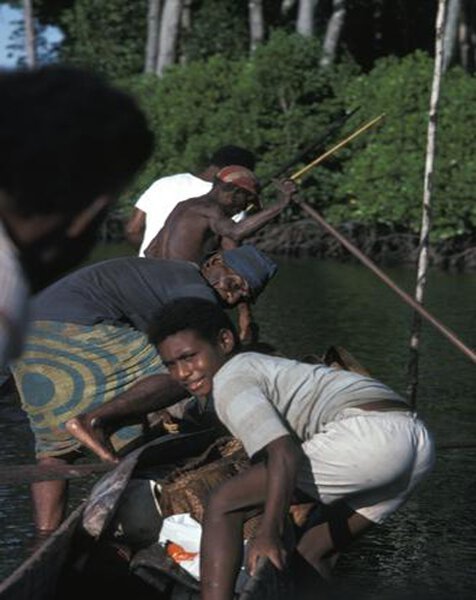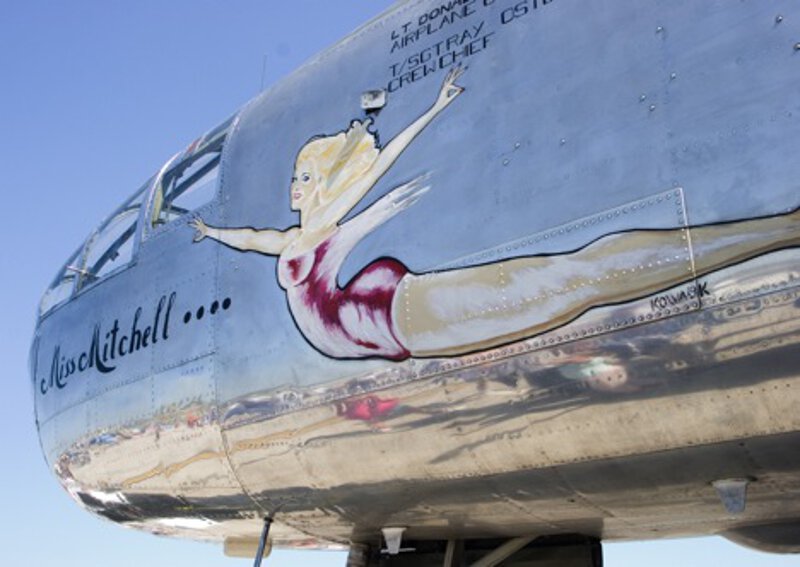-

In Papua New Guinea, the Murik still rely on dugout canoes in daily life. Murik canoes docked along the shore at a rural market on the Sepik River, August 2012. Photo: David Lipset
-

Human canoe-bodies getting in a second canoe-body, 1982. Photo: David Lipset
-

Murik on the way to market in Majob Channel, 2012. Photo: David Lipset
-

A truck is a "canoe-body" from which passengers climb out in the town of Wewak, 2011. Photo: David Lipset
-

A rebuilt WW II fighter, the "Memphis Belle." Photo: Kent Wayland
-

The "Yellow Rose." Photo: Kent Wayland
-

"Miss Mitchell." Photo: Kent Wayland
-

"China Doll." Photo: Kent Wayland
-

The gender of a control panel. Photo: Kent Wayland
-

Cars of a husband and wife in Japan. Photo: Joshua Roth
-

A Trabi as an extended wedding limo in Serbia, 2007. Photo: Marko Živković
-

Fića at work. Photo: Marko Živković
-

Lined-up Fićas of the Fica Lovers Association, 2008. Photo: Marko Živković
-

A rigged up cart on a Belgrade street, 2013. Photo: Marko Živković
-

"Public Servant." Woodcut by Ding Cong, Zhoubao 23; Feb. 9, 1946.
-

"Impatience" (Ji bu ke nai). Cartoon by Zhang Leping 1948, Sanmao the Vagabond, vol.1.
-

"Gypsy Rose." Petersen Automotive Museum, Los Angeles, CA.
-

"Chavez Ravine." Petersen Automotive Museum, Los Angeles, CA.
-

Mr. Cartoon's Lowrider Ice Cream Truck. Petersen Automotive Museum, Los Angeles, CA.
-

Alamo truck mural, San Antonio, Texas.
-

Smile Now/cry later truck, Austin, Texas.
-

Moore's Ford Reenactment, July 2009. Photo: Ellen Schattschneider.

Email Newsletters
Sign up for our email newsletters to get customized updates on new Berghahn publications.
Vehicles
Cars, Canoes, and Other Metaphors of Moral Imagination
Edited by David Lipset and Richard Handler
224 pages, 29 illus., bibliog., index
ISBN 978-1-78238-375-8 $135.00/£104.00 / Hb / Published (August 2014)
ISBN 978-1-78533-751-2 $34.95/£27.95 / Pb / Published (October 2017)
eISBN 978-1-78238-376-5 eBook
Reviews
“The essays in this collection offer fresh perspectives on the social role of transportation. I appreciated the weight given to Pacific cultures, which are not as common in conversations about mobility writ large. Though they do undoubtedly use anthropological methods and ask anthropological questions, they also model innovative ways for discussing how technologies enable their drivers and passengers to engage in an embodied relationship to the past.” · Technology and Culture
“…the book succeeds in demonstrating that vehicles of all sorts may powerfully affect our ways of looking at the world, even as they help us travel through it.” · Transfers
“This edited volume compiles a set of original ethno-graphic case studies focusing on the diverse ways vehicles that convey people through geospatial territory and also convey metaphorical meanings and constructions of the moral…while there has been plenty of attention given to what vehicles signify, there has been little given to how vehicles signify, which is precisely where this book.” · Anthropos
“This volume, Vehicles, is exceptionally important not only for anthropology but for other scientific fields as well. It addresses a core human activity, driving, which appears likely to become a relic of, primarily, the 20th century.” · Anthropological Notebooks
“This book offers ethnographic journeys into the daily work of cultural imaginations by giving attention to what is generally neglected: their vehicles. Not only functional supports or futile material dresses, cars, boats or planes are here delightedly addressed as morale-boosting devices engaged in situated social relations… These essays show that vehicular units are always participation units—they are always vernacular units of cultural agency.” · Pierre Lanoy, Université Libre de Bruxelles
“…An excellent and original volume, a fine example of what comparative anthropology can achieve. Furthermore, in addition to its main topic and objectives (about particular metaphors, what they ‘do’ and how they ‘work’), it addresses key issues in the study of objects, material culture, and techniques, namely the involvement of materiality in non-verbal communication.” · Pierre Lemonnier, Université d'Aix-Marseille
Description
Metaphor, as an act of human fancy, combines ideas in improbable ways to sharpen meanings of life and experience. Theoretically, this arises from an association between a sign—for example, a cattle car—and its referent, the Holocaust. These “sign-vehicles” serve as modes of semiotic transportation through conceptual space. Likewise, on-the-ground vehicles can be rich metaphors for the moral imagination. Following on this insight, Vehicles presents a collection of ethnographic essays on the metaphoric significance of vehicles in different cultures. Analyses include canoes in Papua New Guinea, pedestrians and airplanes in North America, lowriders among Mexican-Americans, and cars in contemporary China, Japan, and Eastern Europe, as well as among African-Americans in the South. Vehicles not only “carry people around,” but also “carry” how they are understood in relation to the dynamics of culture, politics and history.
David Lipset is Professor of Anthropology at the University of Minnesota. He has conducted long-term fieldwork in Papua New Guinea since 1981. His most recent book is called Yabar: Alienations of Men in a Papua New Guinea Modernity (2017). He has also published articles on a variety of topics about changing masculinity in Murik culture. He is currently working on a book on concept of place in the Anthropology of the Anthropocene.
Richard Handler is Professor of Anthropology at the University of Virginia, where he is Director of the Program in Global Development Studies. He has written extensively on nationalism and the politics of culture, museums, and the history of anthropology. His most recent book is Critics Against Culture: Anthropological Observers of Mass Society (2005).




